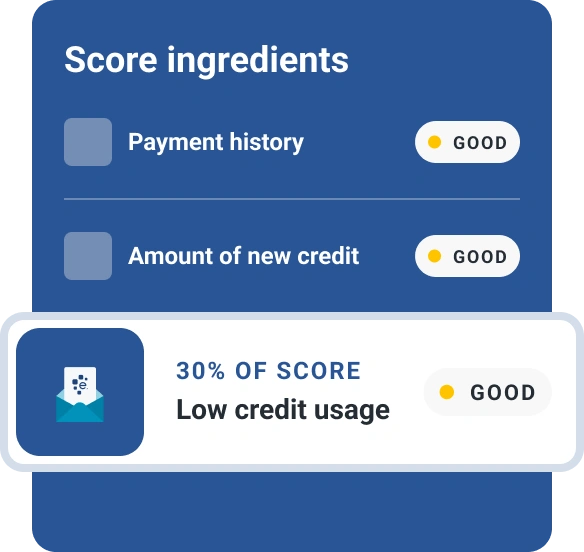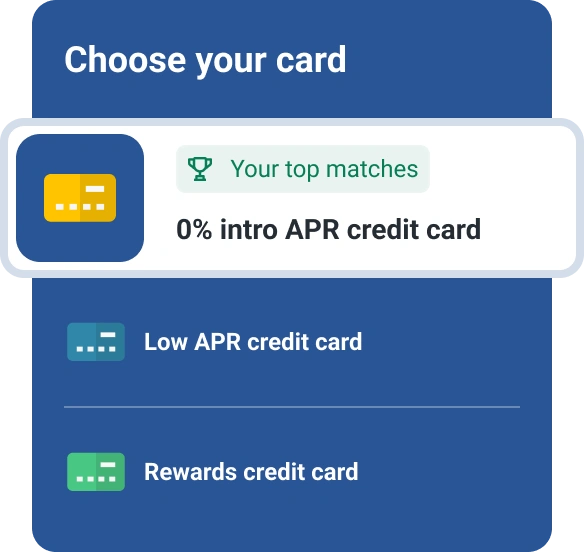What Are Introductory Credit Card Rates?

Introductory credit card rates are special low rates credit card issuers offer as a perk to new cardholders. The promotional interest rate allows new cardholders to avoid interest on certain transactions for a limited time.
Used wisely, a 0% introductory annual percentage rate (APR) can be a strategic way to pay off debt or finance a large purchase without paying extra interest. Terms vary by card issuer, so it's good to understand how introductory credit card rates work so you can get the maximum benefit.
What Does 0% Introductory APR Mean?
When you open a credit card with a 0% introductory APR, interest is waived on certain transactions for a specific period. Once the promotional period ends, the card's regular APR takes effect and any remaining balance starts accruing interest.
The way you can use an introductory APR to your financial advantage depends on two key factors that can vary by offer:
- Qualifying transactions: The promotional interest rate may apply to purchases, balance transfers or both, depending on the credit card. Other transactions, like cash advances, will be charged interest at the regular APR.
- Introductory period length: The 0% intro APR typically lasts anywhere from six to 21 months; terms vary by issuer and transaction type. Some cards offer different timeframes for purchases versus balance transfers.
For example, let's say you make a $1,000 purchase with a credit card that offers an intro 0% APR on purchases for 12 months. If you pay it off during that introductory period, you won't owe any interest. If you only pay off $600 before the introductory period ends, however, the remaining $400 will start accruing interest at the regular APR.
Tip: Don't confuse a 0% intro APR with deferred interest. Deferred interest plans can retroactively apply interest to the entire original balance if you don't pay it off in time.
How Payments Work During a 0% Introductory Period
Even during a 0% intro APR period, you still must make minimum monthly payments. Missing a payment may result in a late fee and loss of your introductory rate.
Some credit cards offer a 0% intro APR for balance transfers but not for purchases. In these cases:
- New purchases may accrue interest immediately, even if you pay on time.
- You typically don't get a grace period on purchases while carrying a balance from a transfer. You'll have to pay the full balance, including the transfer balance, to avoid interest.
- Payments often apply to lower-interest balances first, leaving higher-interest rate purchases to grow.
For interest-free balance transfers, avoid using the credit card for purchases until the transfer balance is completely repaid.
Tip: Look for a credit card that offers 0% intro APR on both purchases and balance transfers if you need flexibility.
Pros and Cons of Introductory Credit Card Rates
While there are several advantages to introductory credit card rates, there are drawbacks to consider.
Pros
-
Interest savings: Use the intro period to finance large purchases or transfer debt, potentially saving hundreds on interest costs.
-
Faster debt paydown: With a 0% intro APR on balance transfers, all of your payment goes toward lowering the balance. This allows you to pay down debt faster and save on interest.
-
Flexible spending: Instead of dipping into savings, use a credit card to pay off large purchases over time with smaller payments with no finance charges. In the meantime, your savings continue to earn interest.
-
Rewards: Some credit cards with introductory rates offer rewards and an intro bonus on purchases. You can redeem rewards for cash back, miles, points and more, depending on the credit card.
Cons
-
Typically require good credit: Most introductory APR credit cards are only available to those with good to excellent credit. You may not have access to this perk if you have a lower credit score.
-
Limited time benefit: You'll need to make large payments to wipe out your balance before the introductory period ends. Any balance left after the intro period ends will begin accruing interest at the regular APR.
-
Credit score impact: Carrying a high balance relative to your credit limit can lower your credit score. Fortunately, your credit score will typically recover as you pay down the balance.
-
Deadline for balance transfers: Some credit cards require you to complete balance transfers within a certain number of days to qualify for the introductory rate.
Learn more: What Happens When Your 0% Introductory APR Ends
How to Save Money With Introductory Credit Card Rates
A little planning can help you make the most of a 0% intro APR:
- Read the terms. Make sure you fully understand the introductory rate—the expiration date, transactions it applies to, balance transfer fee and APR after the introductory period.
- Look for a long introductory period. An intro offer of 15 to 21 months gives you more time to pay off your balance and avoid interest.
- Use for large purchases. Use the flexibility to pay for big purchases over time without paying any interest.
- Transfer high-interest debt. Save on interest costs by reducing your debt during the introductory period. Compare the savings to any balance transfer or annual fees.
- Make a payment plan. Divide your balance by the number of months in the introductory period to determine how much to pay monthly to avoid interest.
- Be cautious with spending. Don't charge new purchases on a balance transfer card unless the introductory rate covers both.
The Bottom Line
An introductory 0% credit card rate can be a smart financial tool for consolidating debt or financing a major purchase. Keep in mind that these offers are temporary and discipline is important for avoiding debt. Always check your credit score before applying to see where it stands and read the terms carefully to avoid surprises.
Discover low interest credit cards
Keep more cash in your wallet with a low interest credit card. See what offers you qualify for based on your FICO® Score.
See your offersAbout the author
LaToya Irby is a personal finance writer who works with consumer media outlets to help people navigate their money and credit. She’s been published and quoted extensively in USA Today, U.S. News and World Report, myFICO, Investopedia, The Balance and more.
Read more from LaToya

